The most important bicycle race in the world is the Tour de France, held every year in July. The second most important will be held this Sunday: Paris-Roubaix (say pair-eé roo-báy). To understand just how difficult this one-day race is, all one needs to know is its long-standing monickers: The Hell of the North and A Sunday in Hell.
First run in 1896, Paris-Roubaix averages around 260 kilometers (depending on slight annual variations in the course), or about 161 miles. Paris and Roubaix, France, indicated the original start and end points of the race from 1896 to 1967. Since 1968 the race has started in various French cities but has always ended in the velodrome in Robaix. Regardless of where it starts, the race keeps the traditional name, Paris-Roubaix.
Why "Hell of the North?" Because Roubaix, France, where the race ends, is on the northernmost border of France, right against the France-Belgium border. Belgium is the most fanatical cycling country in Europe and thousands upon thousands of alcohol-fueled Belgians and French line the final miles of the narrow roads making it akin to a gauntlet at a fraternity hazing (all in the historic European spirit of good clean cycling fun, of course). But that's the least of the problems.
Riding 161 miles on a bike under the best of circumstances is bad enough. But 150 riders racing that far on narrow French roads only adds to the danger. The weather is almost always miserable—very cold and very wet. But that's not the worst part of Paris-Roubaix. The worst part are the cobbles.
The race route alternates between tarmac (smooth, paved roads) and very old rural roads still covered with pavé—the traditional, thick paving stones which were originally used to surface the roads. But the pavé are not like smooth, brick-paved streets we might see in America. Many of the cobbles have gaps between them of 1-2 inches on all four sides—not a problem for a car or tractor tire, but absolutely brutal for a very-thin-wheeled racing bike to ride over. Filling the gaps between the cobbles is dirt, not mortar. So when it rains, the dirt turns to mud and the cobbles become extremely slick, resulting in countless crashes and pile-ups during the race. Plus, the bikes have no fenders, so the wheels of every bike flip muddy water into the air with every revolution, soaking every rider with freezing mud in the years it rains. In the coldest wettest years, a large percentage of the riders who begin Paris-Roubaix never make it to the finish line.
Is "Hell of the North" sounding a little more reasonable?
In 2008 there were 28 cobble sections that varied in difficulty and accounted for about one-quarter of the total distance. The cobbled sections are graded according to difficulty, meaning their condition, the following pictures attesting to the variability of the pavé. (Note how narrow the roads are, making for pure bedlam when you combine the bike riders, motorcycle escorts, team support vehicles, official referee vehicles, and the loopy French and Belgian fans crowding in from both sides.)
Following are some views of various conditions of the cobbles along the course:
This is what happens all day long, along with repetitive punctured tires and broken stems and handlebars from the constant pounding:
Here's what the riders can look like (or worse) in the years when it rains:
The winner's trophy is an actual traditional pavé—you can see how deep they are set into the road bed:
The race will be almost over by the time we are well into Sunday, but the Versus network will carry the re-broadcast of the race Sunday evening from 6:00-9:00 pm. Live streaming of the race Sunday morning can be found on numerous Internet sites in your choice of European languages. It is something to behold.
Michael Barry, one of the most experienced riders on the pro circuit, captured the feel of Paris-Roubaix with a helmet cam when his British Sky Team took a training run on the last 100k of the route just yesterday. Here's how he described it on his blog, Le Métier:
Three days prior to the start of Paris Roubaix the team drove to the Arenberg forest to ride the course. From Arenberg it is roughly 100 km to the finish. Each of the 17 remaining cobbled sectors is separated by less than 10 km of tarmac. In Arenberg the race becomes relentlessly difficult—the 100 km that follow the forest are perhaps the hardest 100 km in professional cycling. The vibrations beat the cyclist’s body, his muscles are torn from the effort and his eyes burn from the dust.
The cobbles were relatively dry when we rode them although there were a few muddy sections where puddles had formed or tractors muddied the road. In the video, you can see the riders slipping and sliding on the slick sections. The crowds were already gathering in anticipation for Sunday’s race and the media was out to photograph the protagonists testing their legs and their equipment on the cobbles.
And here's what it looked (and felt) like (the worst part being in the last minute of the video):
Pinarello, the Italian builder who furnishes Team Sky's bikes (seen in the above video), created a version of their new carbon Dogma 60.1 bike, the KOBH (say "cob," short for cobblestone) just for Paris-Roubaix with some tweaks to make it a bit more comfortable in light of the constant pounding the riders take. (For roadies: note the small black "box" beneath the bottle cages—the battery pack for the Shimano Di2 electronic shifter system which several of the pro teams began using in 2009 and which has gotten excellent reviews for reliability—and also expense. The Pinarello KOBH below with the Di2 system sells for $10,380 in a basic configuration at Competitive Cyclist in Little Rock, AR.) Italian wheels—nice:
Good luck, boys!
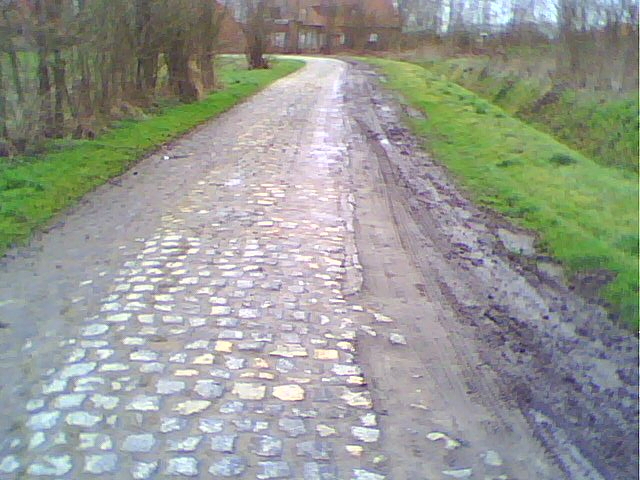
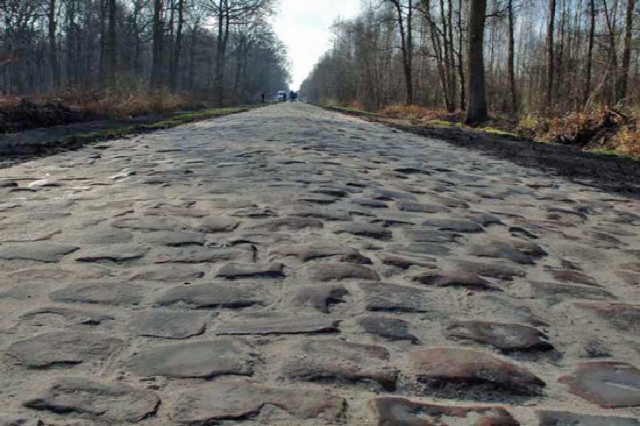
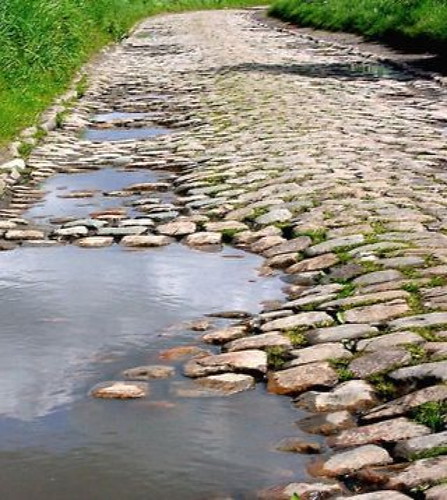

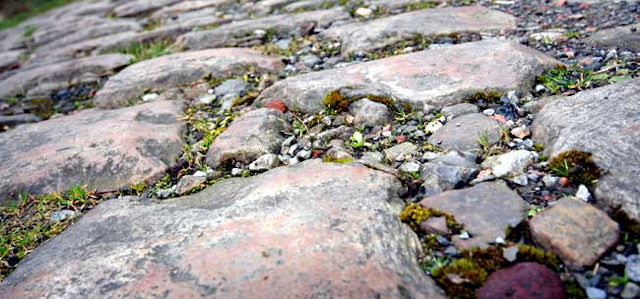

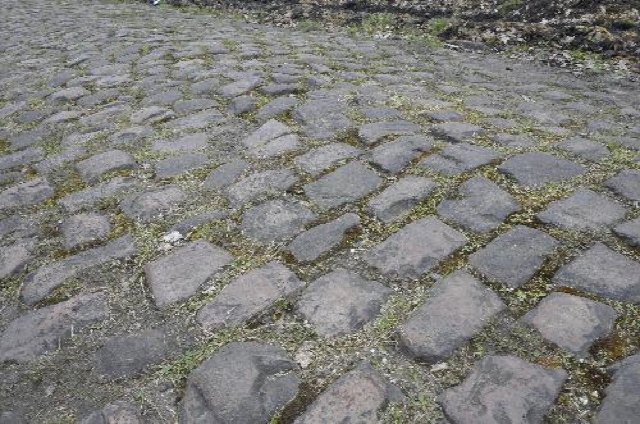

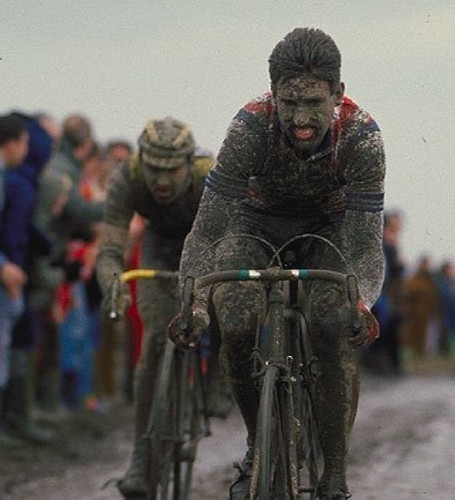
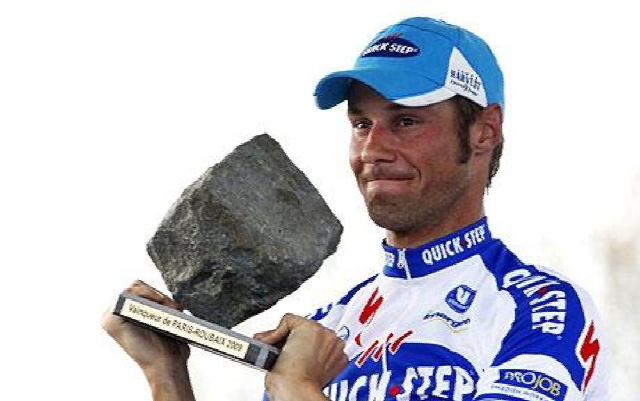






No comments:
Post a Comment